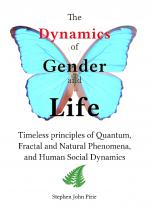[Excerpt Be and Become, © ProCreative, Sydney 2000]
Historically, the mathematicians’ use of unreal, immeasurable numbers to explain real phenomena was initially developed by Aristotle to resolve Zeno’s troubling paradoxes.
Scientists, in the intervening 2,300 years, have further refied the use of such unknowable numbers. Of particular note were Newton and Leibniz who developed (independently of each other) differential calculus in the latter half of the 17thcentury. Differential calculus greatly refined the use of these unknowable infinitesimals to such an extent that it became the mathematical foundation of the industrial revolution.
As physicist and science writer Richard Morris noted:
The calculus represented a great advance because it gave scientists a method for dealing with the behavior of bodies, such as falling weights or orbiting planets, that did not move at constant velocities. Furthermore, it could be used to describe the behavior of any quantity that varied in time..... (and) the calculus can be used to describe quantities that vary in space as well.1
As a result, calculus is not only used to resounding effect by the physical sciences, but also by the biological and social sciences.
It is used, for example, in the physical sciences to study the speed of a falling body, the rates of change in a chemical reaction, or the rate of decay of a radioactive material. In the biological sciences a problem such as the rate of growth of a colony of bacteria as a function of time is easily solved using calculus. In the social sciences calculus is widely used in the study of statistics and probability.2
Differential and integral calculusii has become an indispensable tool in our modern technological society. In fact, physicist Richard Morris claimed that
The invention of differential calculus must be considered to be one of the greatest mathematical discoveries of all time.fn]Morris, p.63.
The tremendous success of calculus (and the use of infinitesimals
in general) exacerbated the contrast between the practical real world and the theoretical use of unreal measures. So it is not surprising that with the advent of calculus came those who were at odds with the idea of using unreal measures in order to explain real phenomena.
Richard Morris, in his book “Achilles in the Quantum Universe,” cites one such example.
In 1734, British philosopher Bishop George Berkeley published a book in which he argued that
the calculus was based on illogical foundations. Speaking of infinitesimals, he (Berkeley) said, “They are neither finite quantities, nor quantities infinitely small, nor yet nothing. May we not call them the ghosts of departed quantities....?” When one examined expositions of the calculus, Berkeley said, it was to discover “much emptiness, darkness and confusion; nay, if I mistake not, direct impossibilities and contradictions.”3
- 1. Richard Morris, Achilles in the quantum universe: the definitive history of infinity, Souvenir Press, London 1998, p.63
- 2. “Calculus,” The Funk & Wagnalls New Encyclopedia, (Electronic Edition), Funk & Wagnalls Corporation, 1994.
- 3. Morris, p.65 (citing Bishop George Berkeley, The Analyst Or a Discourse Addressed to an Infidel Mathematician....)
 "The Dynamics of Gender and Life" ebook is now available at
"The Dynamics of Gender and Life" ebook is now available at